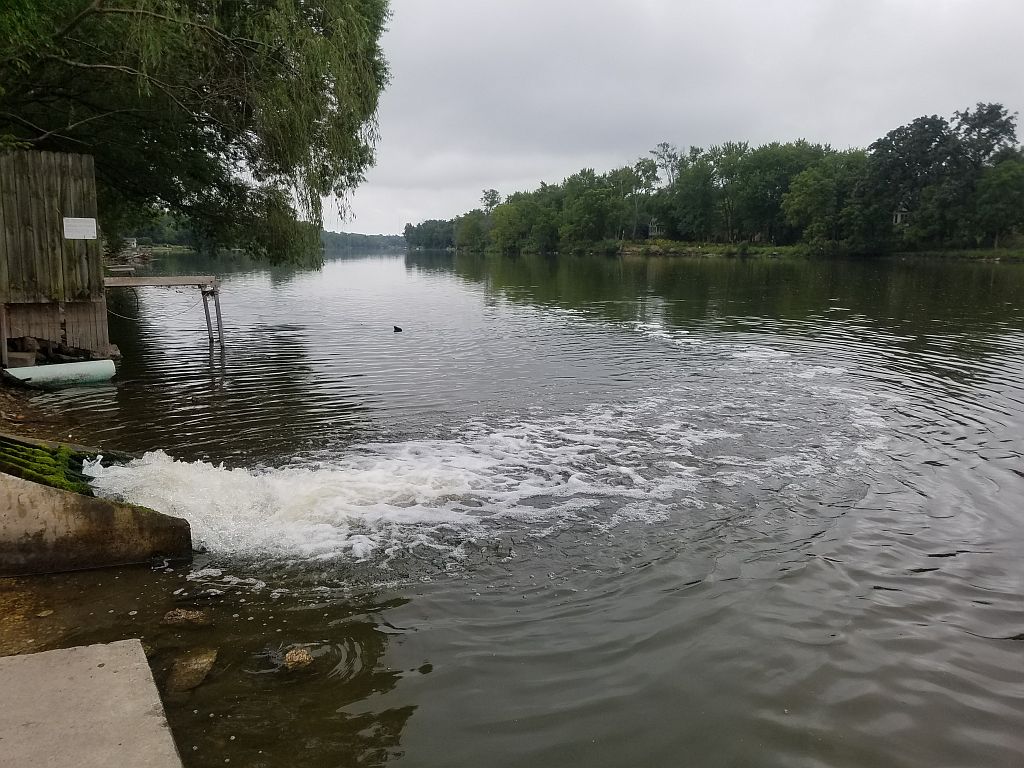From time to time Friends of the Fox River receives questions thru our website or Facebook page about the river, pollution and other watershed related issues. Here’s a question we received that FOFR Director Art Malm researched and answers.
J. Faust asks:
Do you have an estimate of the volume the many water reclamation districts along the Fox are contributing to the down river flows? I’ve heard rumors that sewage plants are the only thing keeping water flowing into the Fox during some of the drier years. This seems far fetched to me… but I’m sure they are contributing factors nonetheless.
Can someone answer this? I’ve seen a map of NE IL water withdrawals, but not one of WWTP (Waste Water Treatment Plant) discharges on the Fox.
By Art Malm, FOFR Board Member
When drought conditions settle over the Fox’s watershed our river’s flows drop substantially. The Fox may even look almost dry in spots where the river flows more under the rocks than over. Some wonder whether during times of drought if all of the flow comes from wastewater treatment plants. Is that possible?

There’s a lot of information to gather and untangle to answer this question with precision. Likely too much to ever determine the “truth”. We can though make a very good and fact based approximation.
Hydrologists and engineers use a factor called the “7 day 10 year low flow” to quantify how much water flows during periods of drought. That number, based on historic data, is the average lowest flow expected during a seven day period every 10 years. While different for every location along the Fox, to make our approximation we’ll use the 7 day 10 year low flow near the south end of the Fox at Montgomery. That number is around 152 cubic feet per second (“CFS”).
In other more familiar terms, every 10 years we can expect the flow of the Fox to drop to only 98 million gallons per day (“MGD”).
In the Illinois section of the Fox it is estimated the cities of Elgin and Aurora combine to discharge approximately 2/3rds of all the treated/reclaimed wastewater reaching the river. During dry periods Elgin’s treated discharge drops to around 20 MGD, Aurora’s to 28 MGD. Everyone else in the watershed contributes around 24 MGD. Doing the math: (20 + 28 + 24)/98 = 0 .735 or 73.5%
 So our questioner has pretty good information. Based upon historic data and some authoritative estimates there have been, and will be times when nearly 3/4 of the flow in the Fox has passed through the water pollution control facilities along its way to the Illinois.
So our questioner has pretty good information. Based upon historic data and some authoritative estimates there have been, and will be times when nearly 3/4 of the flow in the Fox has passed through the water pollution control facilities along its way to the Illinois.
This fact alone underscores the importance of these water pollution control plants and the investment’s made in their construction and operation over the past five decades. The improvements we’ve seen in the quality of water and fish in our Fox over these decades are being well documented. Yet as we work to retain these gains, the Friends of the Fox River and our sister organizations in the watershed continue to reach for the goal of returning the Fox to what it was when James Gifford wrote to his wife Laura in his letter of April, 1835:
“The Fox is the finest stream I ever saw, it has uniformly in this State a limestone bottom, its current uniform and gentle, its waters pure, and is abundantly supplied with fine Fish.”


